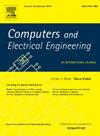A ghost-free multi-exposure image fusion using adaptive alignment for static and dynamic images
IF 4
3区 计算机科学
Q1 COMPUTER SCIENCE, HARDWARE & ARCHITECTURE
引用次数: 0
Abstract
Multi-Exposure image Fusion (MEF) blends images with varying exposures to construct a well-exposed outcome that retains all essential details. While many MEF techniques are effective, the dynamic image sets, where movements are present, pose challenges during fusion, leading to severe artifacts. Existing approaches inherently rely on the median image to align image sets before fusion for rectifying this crisis. However, the uncertainty caused by limited datasets and distorted median image during alignment is an ongoing critical issue in the domain. The proposed method presents a novel MEF framework, introducing a newly developed adaptive alignment technique and a unique Singular Value Decomposition (SVD) weight map, specifically designed to handle dynamic image sets. This strategy efficiently aligns the input images using a qualified reference image and performs pyramidal fusion using SVD along with adaptive well-exposedness, and contrast weight maps. This effectively handles both dynamic and static images, outperforming existing MEF techniques in visual analysis and empirical tests. Furthermore, significant performances from the execution time, pixel intensity analysis, and infrared-visible image fusion analysis confirm the practicality of our approach. The proposed methodology reinforces MEF's vital role in image processing applications such as medical imaging, surveillance, and remote sensing.
利用自适应配准实现静态和动态图像的无重影多曝光图像融合
多曝光图像融合(MEF)将不同曝光度的图像融合在一起,以构建一个曝光良好的结果,并保留所有基本细节。虽然许多多曝光图像融合技术都很有效,但动态图像集(存在移动)在融合过程中会带来挑战,导致严重的伪影。现有的方法本质上依赖于中值图像,在融合前对齐图像集,以纠正这一危机。然而,有限的数据集和配准过程中扭曲的中值图像造成的不确定性是该领域一直存在的关键问题。本文提出了一种新颖的 MEF 框架,引入了新开发的自适应配准技术和独特的奇异值分解(SVD)权重图,专门用于处理动态图像集。该策略使用合格的参考图像对输入图像进行有效对齐,并使用 SVD 以及自适应曝光度和对比度权重图执行金字塔融合。这能有效处理动态和静态图像,在视觉分析和实证测试中优于现有的 MEF 技术。此外,在执行时间、像素强度分析和红外可见光图像融合分析方面的显著表现也证实了我们方法的实用性。所提出的方法加强了 MEF 在医疗成像、监控和遥感等图像处理应用中的重要作用。
本文章由计算机程序翻译,如有差异,请以英文原文为准。
求助全文
约1分钟内获得全文
求助全文
来源期刊

Computers & Electrical Engineering
工程技术-工程:电子与电气
CiteScore
9.20
自引率
7.00%
发文量
661
审稿时长
47 days
期刊介绍:
The impact of computers has nowhere been more revolutionary than in electrical engineering. The design, analysis, and operation of electrical and electronic systems are now dominated by computers, a transformation that has been motivated by the natural ease of interface between computers and electrical systems, and the promise of spectacular improvements in speed and efficiency.
Published since 1973, Computers & Electrical Engineering provides rapid publication of topical research into the integration of computer technology and computational techniques with electrical and electronic systems. The journal publishes papers featuring novel implementations of computers and computational techniques in areas like signal and image processing, high-performance computing, parallel processing, and communications. Special attention will be paid to papers describing innovative architectures, algorithms, and software tools.
 求助内容:
求助内容: 应助结果提醒方式:
应助结果提醒方式:


